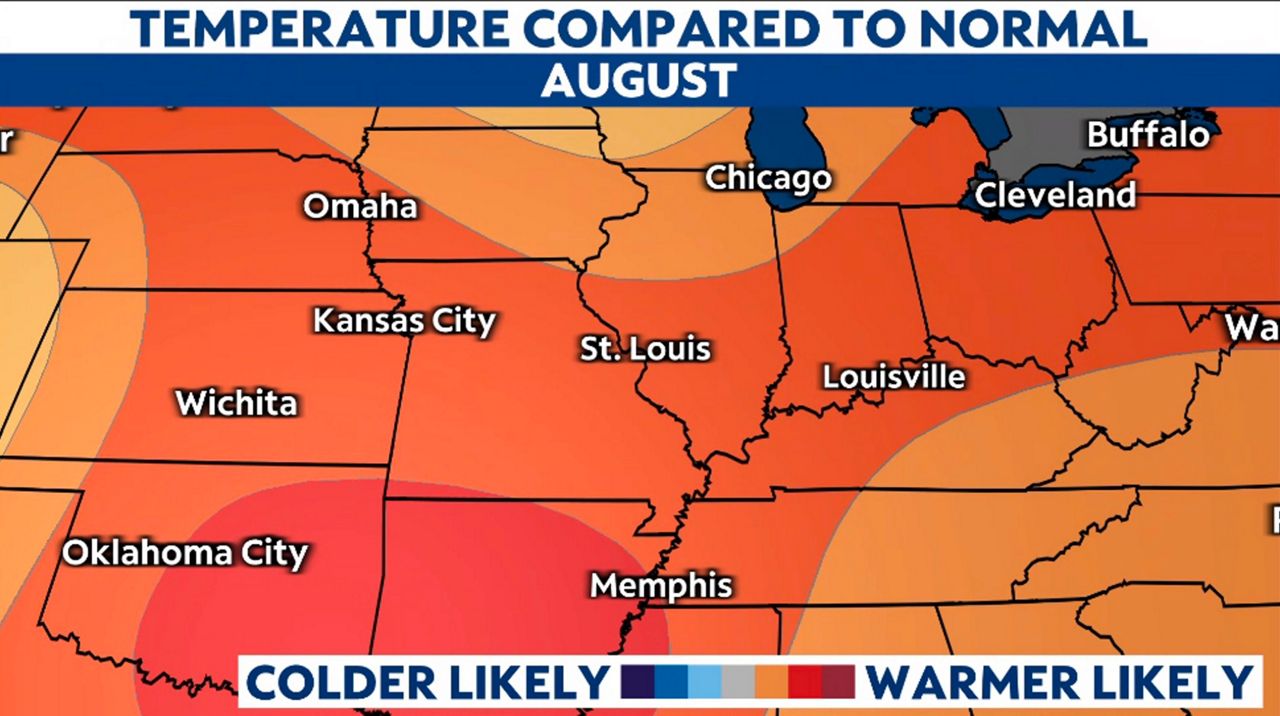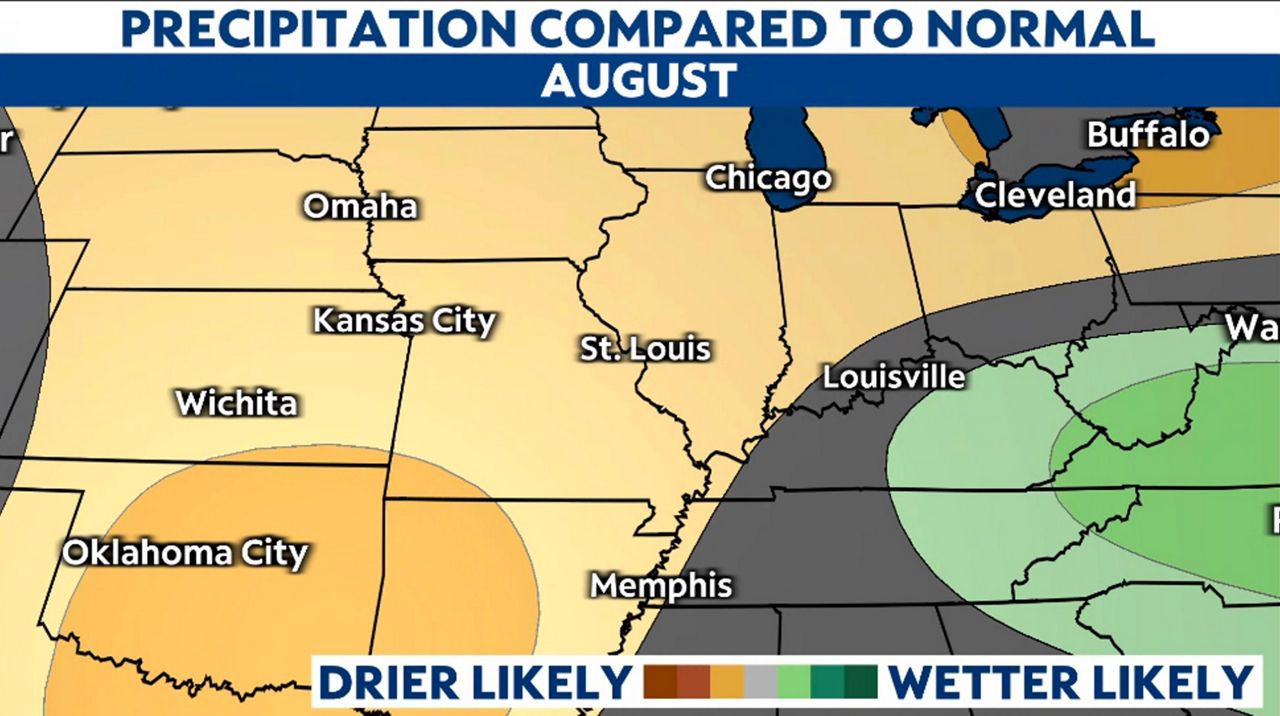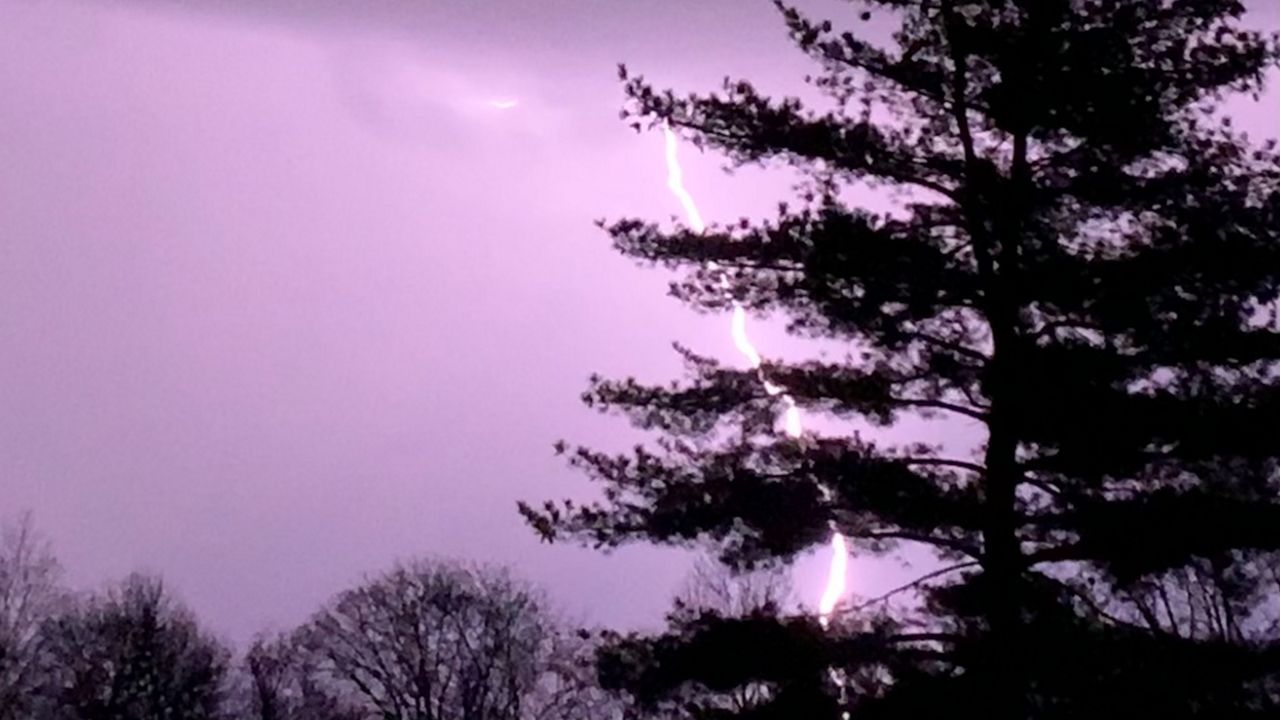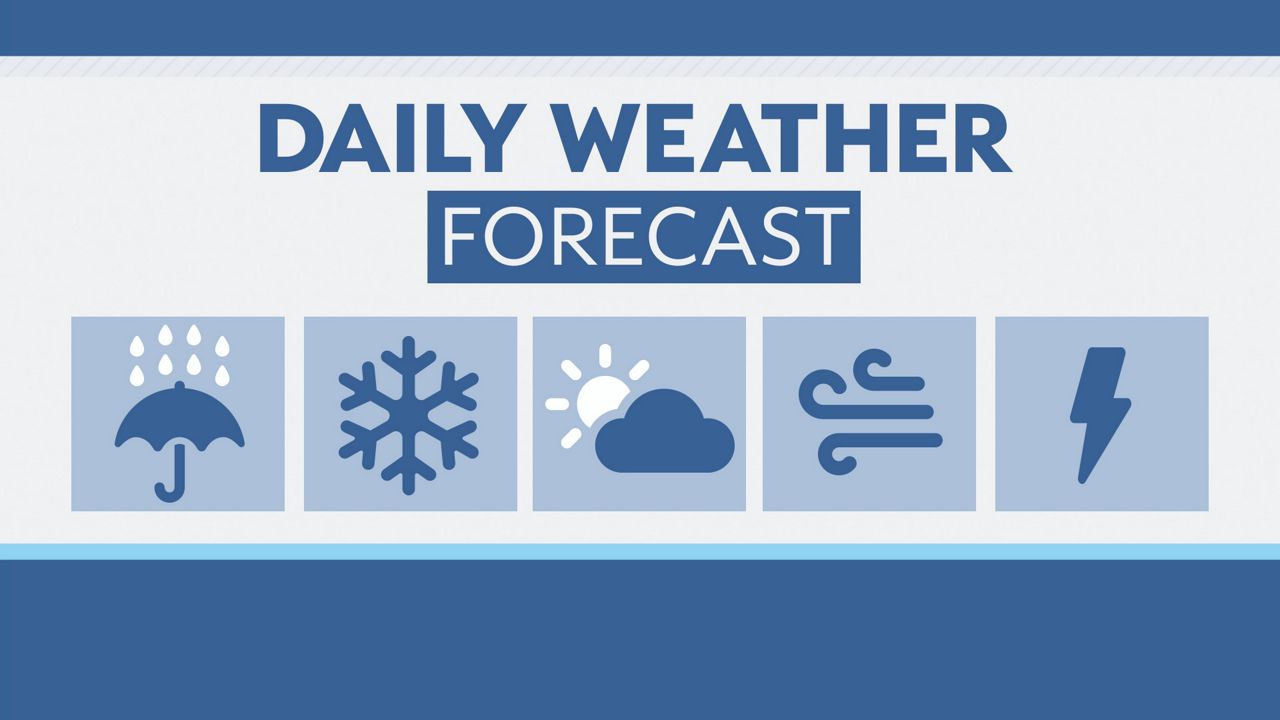The month of July was an interesting one. It was hot and dry for most of the month, even putting the St. Louis area in a drought concern. Until, one day changed that.
Climatologically, the hottest time of the year, the average high for the St. Louis area hovers around 90 degrees for most of the month of July. We exceeded that average high 18 times this month.
We had six days where the mercury was 100 degrees or higher, and 11 days of cooler than average readings. Two days were of average values.
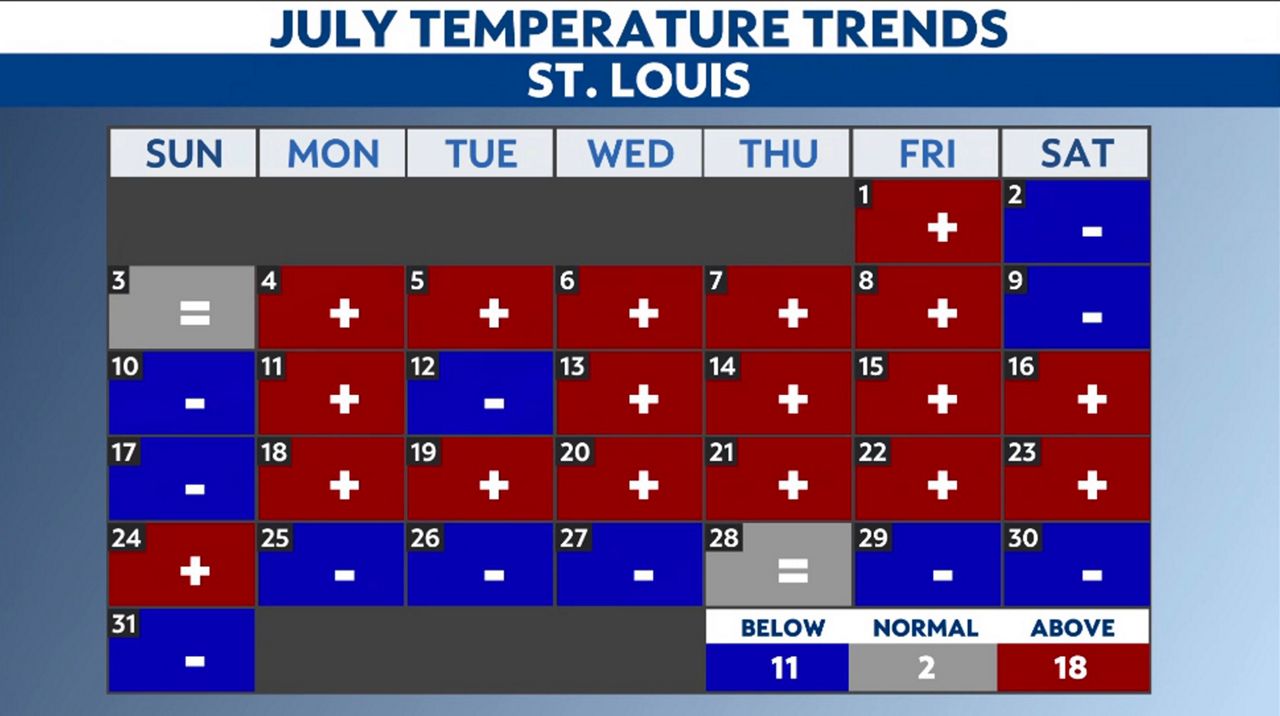
Rainfall totals at the St. Louis Lambert International Airport through July 24, 2022 were under 2 inches, giving a deficit of over a 0.5 inches for the month. June 2022 was a dry month as well, so combining rainfall totals for both months showed an even larger deficit, of over 3 inches.
On July 21, 2022, Governor Parson issued an Executive Order calling upon the Missouri Department of Natural Resources to activate the Drought Assessment Committee and the associated drought impact teams.
75% of the state, by this date, was in drought conditions with at least 35% in extreme drought, most noticeably in the southern part of the states.
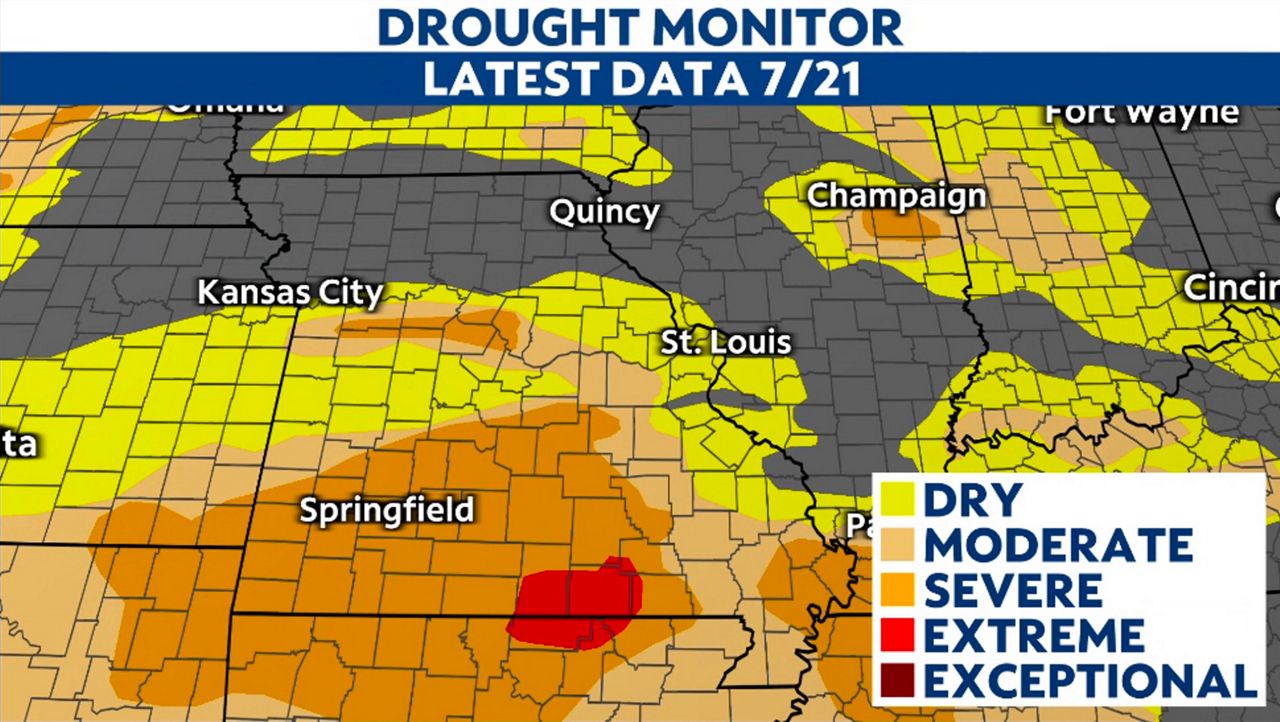
It seemed like for much of the month, we couldn’t “buy a raindrop.” All of that changed on the morning of July 26, 2022. A stalled front sat just to the south of the region, along I-70.
Thunderstorms developed overnight and began “training” (tracking over the same area for an extended period). This resulted in extreme amounts of rain. Rainfall totals ranged from around an inch in Imperial, MO, to over 12 inches in Wentzville, Mo.
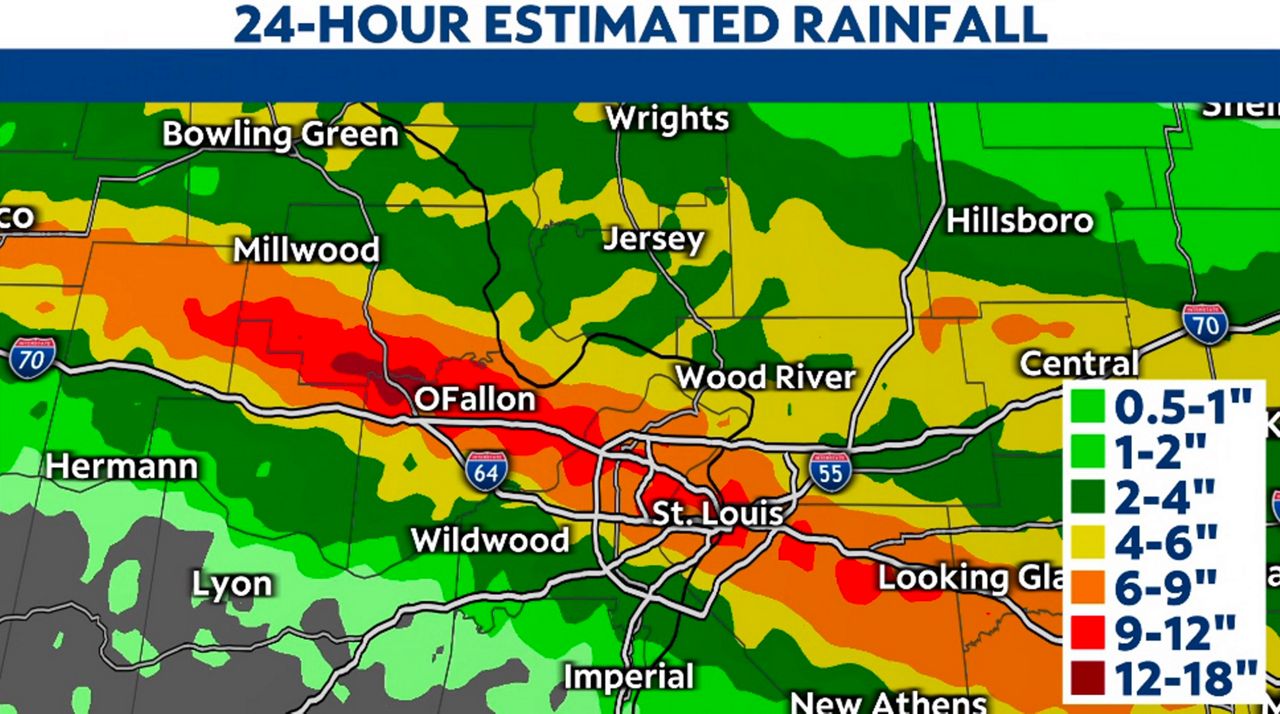
The St. Louis Lambert International Airport recoded their wettest day on record, when 8.64 inches of rain fell, smashing the nearly 107-year-old record of 6.85 inches. For the entire storm, the airport, the airport picked up 9.07 inches.
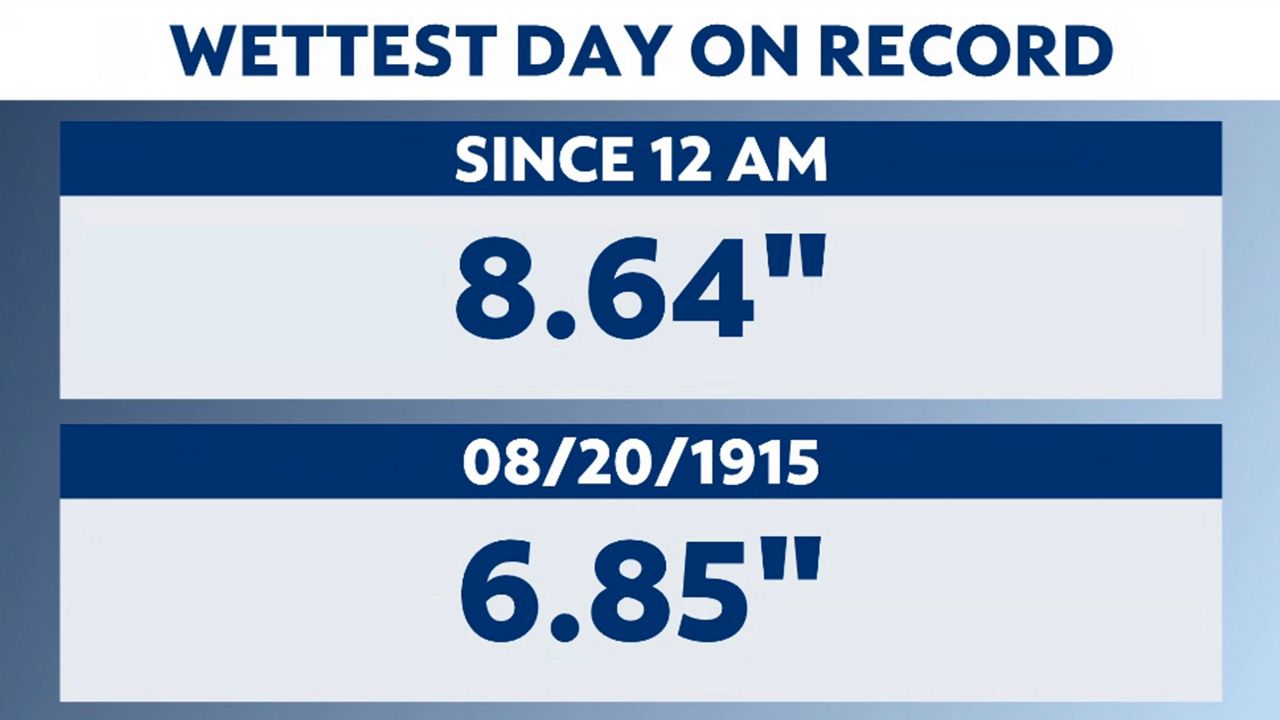
Flash flooding on this day caused significant damage in St. Charles and St. Louis Counties, along with the city of St. Louis.
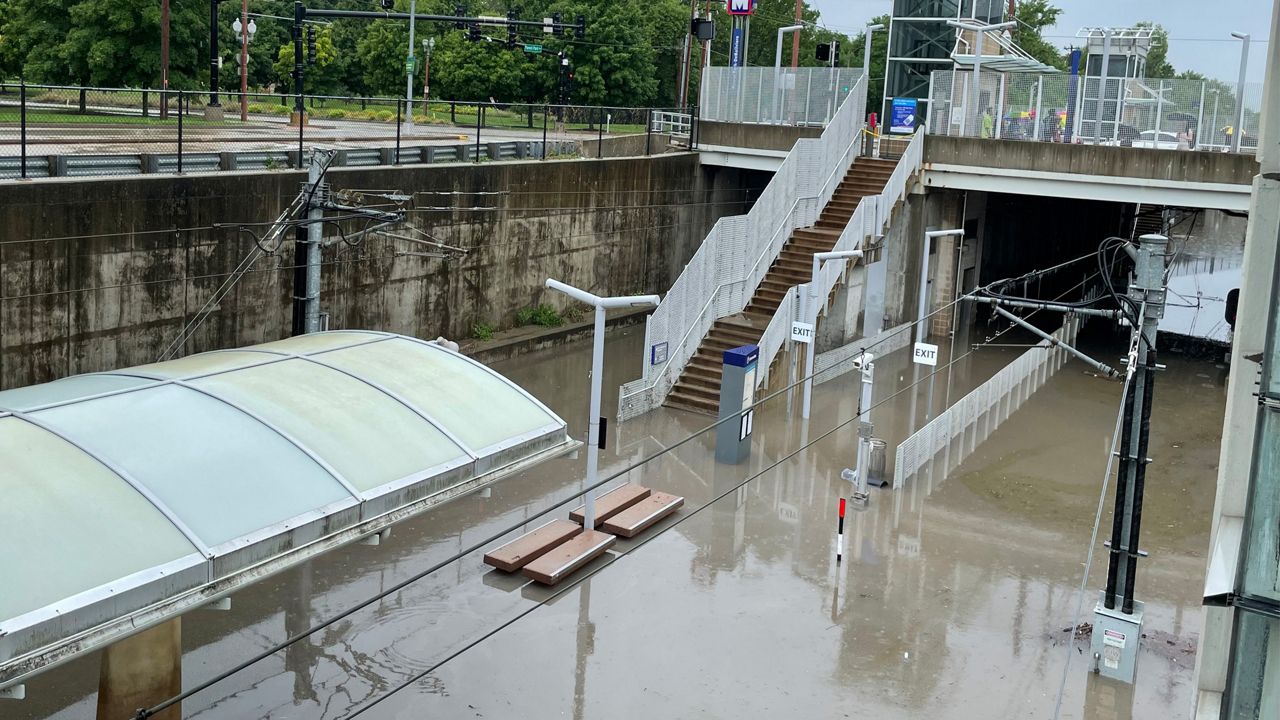
Rain didn’t stop falling in the region for the month. In fact, the next day, July 27, nearly another inch of rain fell. Thankfully, it fell over a longer duration, and didn’t prompt more flooding.
However, on the afternoon of July 28, a disturbance moved along the stalled frontal boundary and produced storms over the St. Louis area. This time, the storms enhanced right over the Central West End and downtown, dropping anywhere from 2-4 inches of rainfall in just 30 minutes.
Heavy rain falling on already saturated grounds caused flash flooding once again. This time during rush hour. Major interstates near downtown were at a standstill as already stressed drainage areas couldn’t keep up with the water.
With so much rain during the latter part of the month, the airport observed 12.22 inches for July 2022. While not the wettest July on record, July 2022 now ranks as the second wettest on record with July, 1948 maintaining the top spot with 12.69 inches of rainfall.
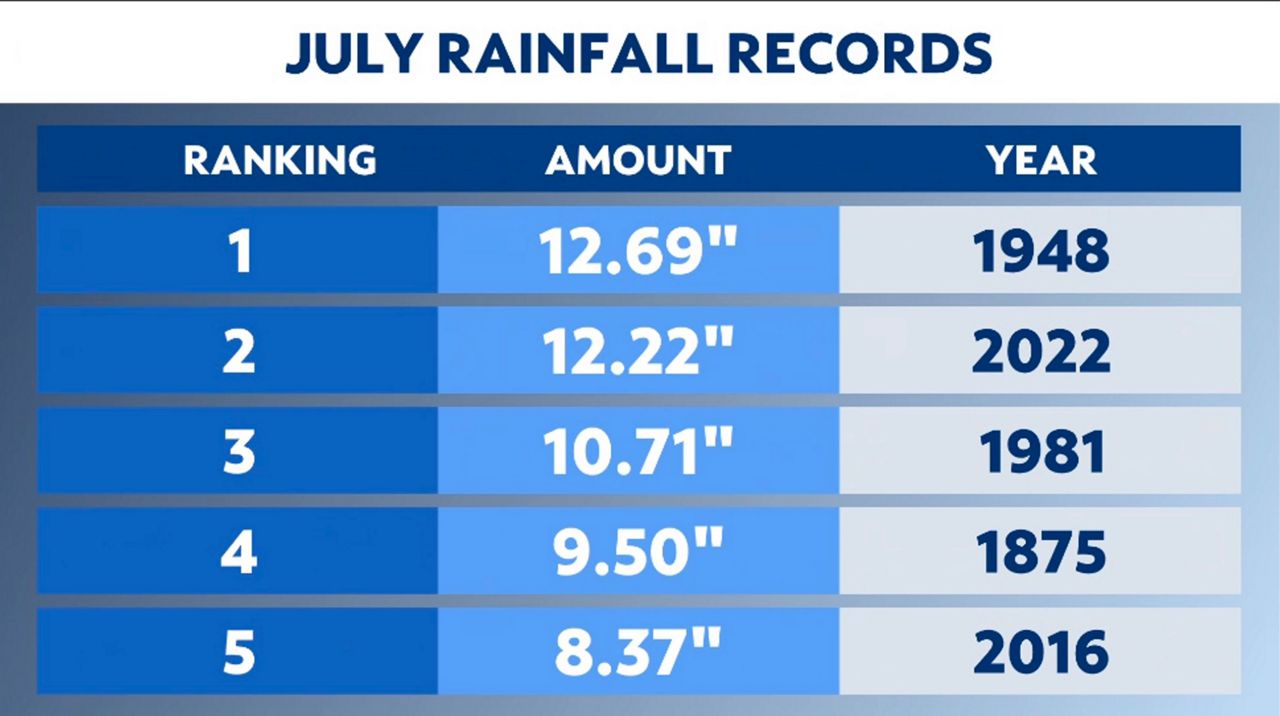
The wettest month in St. Louis history, dating back to 1874, was August, 1946 with 14.78 inches of rain.
With one day of the month changing the trajectory of the entire climate situation in the area, how does August look to compare? Initial climate predictions for the month are for warmer and drier than average conditions.
The climatological warmest part of the summer has peaked, and average high temperatures dip below 90 degrees for the beginning of August. By the end of the month, average highs will be in the mid-80s. Normal rainfall for the St. Louis area for August is 3.38 inches.
